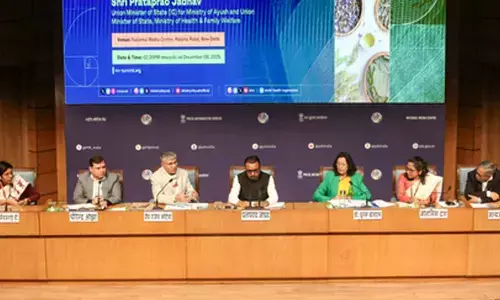Handloom Weaver Suicide with the weight of Economic Hardship.

Kake Paramesh, a 52 -year-old handloom worker residing in Bharat Nagar Colony near Kottam College in Jogulamba Gadwal District, Alampur Taluka, Aija Municipality, had been battling severe financial distress for several years.
Gadwal : Kake Paramesh, a 52 -year-old handloom worker residing in Bharat Nagar Colony near Kottam College in Jogulamba Gadwal District, Alampur Taluka, Aija Municipality, had been battling severe financial distress for several years. The pressures of mounting debts and insufficient income had taken a toll on his mental health. Despite his best efforts to provide for his family, the weight of economic hardship became too heavy to bear.
On a quiet night, while his family was asleep, Paramesh made a tragic decision. At 12:30 AM, he hanged himself from a ceiling fan with a saree. His wife and children were devastated upon discovering his lifeless body. The sorrow of losing a husband and father under such circumstances left them inconsolable.
The financial strain that led Paramesh to this desperate act was not unique. Many handloom workers in the region faced similar challenges. Over the years, various governments had come and gone, each promising to improve the lives of workers. During the tenure of K. Chandrashekar Rao (KCR), handloom workers were assured a monthly pension of 3,000 rupees as part of a government support scheme. However, this pension was disbursed for only two months before it was abruptly halted.
When the Congress government, led by Chief Minister Revanth Reddy, came to power, support for handloom workers diminished further. The termination of the pension scheme left many weavers disoriented and struggling to make ends meet. Paramesh was one of many who fell into despair, unable to see a way out of his financial woes.
The tragic death of Paramesh served as a grim reminder of the dire situation faced by handloom workers. The community called upon the government to provide consistent and substantial support to ensure such tragedies did not recur. They hoped Chief Minister Revanth Reddy would heed their pleas and introduce measures to alleviate their suffering.
The grief-stricken family of Paramesh now faced an uncertain future without their primary breadwinner. They, along with the entire handloom worker community, fervently wished for a change in their fortunes. They hoped for a government that would genuinely support and uplift them, preventing further loss of life due to economic despair.
Implementing schemes for the welfare of handloom weavers involves several steps to ensure the benefits reach the intended beneficiaries effectively.
Here are key strategies for successful implementation:
Central Government Schemes
1. National Handloom Development Programme (NHDP):
- Awareness and Outreach : Conduct awareness campaigns to inform weavers about the scheme's benefits.
- Cluster Development : Identify and develop handloom clusters, providing them with infrastructure, training, and marketing support.
- Monitoring and Evaluation : Regularly monitor the progress of clusters and evaluate their performance to ensure continuous improvement.
2.Handloom Weavers' Comprehensive Welfare Scheme :
- Registration Drives : Organize registration camps to enroll weavers for health and life insurance schemes.
- Awareness Programs : Educate weavers about the benefits and claim processes of the insurance schemes.
- Partnerships with Healthcare Providers : Collaborate with hospitals and clinics to offer accessible healthcare services to insured weavers.
3. Weaver MUDRA Scheme :
- Loan Camps : Set up loan camps in handloom clusters to facilitate easy access to credit.
- Financial Literacy : Conduct workshops on financial management and loan utilization.
- Monitoring Utilization : Track the utilization of loans to ensure they are used for productive purposes.
4. Handloom Marketing Assistance :
- Organize Expos and Fairs : Facilitate the participation of weavers in national and international handloom expos and fairs.
- Market Linkages : Create linkages with retail chains, boutiques, and online platforms to expand market reach.
- Promotional Activities : Conduct marketing campaigns to promote handloom products.
5. Yarn Supply Scheme (YSS) :
- Subsidized Yarn Distribution : Ensure timely and adequate distribution of subsidized yarn to weavers.
- Simplified Procedures : Simplify the process for availing subsidies to reduce bureaucratic hurdles.
- Quality Control : Implement quality control measures to ensure the yarn provided meets required standards.
6. Cluster Development Programme for Handloom Sector:
- Cluster Identification: Identify potential handloom clusters for development based on their unique products and skills.
- Infrastructure Development : Invest in infrastructure, such as common facility centers and design studios.
- Skill Enhancement : Provide training programs to enhance the skills of weavers in modern techniques and designs.
State Government Schemes (Telangana)
1. Chenetha Mithra :
- Subsidy Awareness : Conduct awareness drives to inform weavers about the subsidy and how to avail it.
- Streamlined Application : Simplify the application process for subsidies to make it more accessible.
- Regular Monitoring : Monitor the distribution of subsidies to ensure timely and fair disbursement.
2. Nethanna Ku Cheyutha :
- Direct Benefit Transfer (DBT): Implement a DBT system to transfer financial assistance directly to the weavers' bank accounts.
- Regular Disbursement: Ensure the financial assistance is disbursed regularly and on time.
- Grievance Redressal : Set up a grievance redressal mechanism to address any issues faced by beneficiaries.
3. TSCO (Telangana State Handloom Weavers Cooperative Society) :
- Product Showcases :
Organize product showcases and exhibitions to market handloom products.
- Retail Outlets : Expand the network of TSCO retail outlets to increase market access.
- Online Platforms : Promote handloom products through e-commerce platforms.
4. Aadhar-Linked Health Insurance Scheme :
- Simplified Enrollment : Simplify the enrollment process for health insurance to increase participation.
- Partnerships with Health Providers : Collaborate with local healthcare providers to offer services under the scheme.
- Health Camps: Organize health camps in handloom clusters to provide preventive and primary healthcare services.
General Implementation Strategies
- Stakeholder Involvement : Involve local governments, NGOs, and handloom cooperatives in the implementation process.
- Capacity Building : Provide training to officials and stakeholders on scheme implementation and management.
- Digital Platforms: Utilize digital platforms for the application, monitoring, and disbursement processes to enhance transparency and efficiency.
- Feedback Mechanisms : Establish feedback mechanisms to gather inputs from weavers and make necessary improvements to the schemes.
- Regular Audits: Conduct regular audits to ensure the schemes are being implemented as intended and the funds are being utilized properly.
By following these strategies, governments can effectively implement schemes for the welfare of handloom weavers, ensuring they receive the support needed to sustain their livelihoods and preserve their craft.














